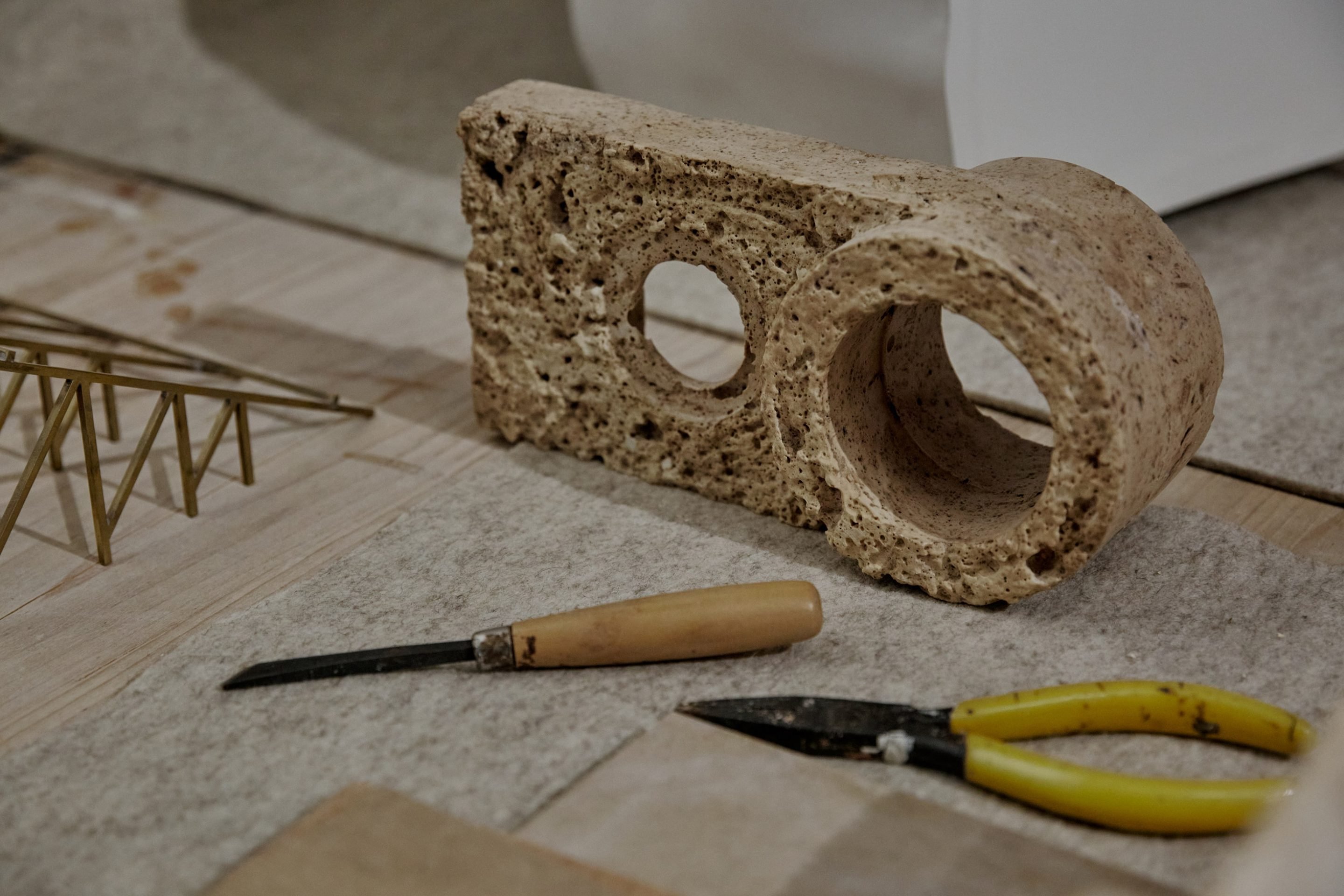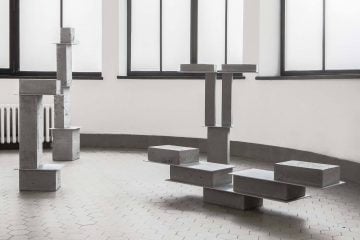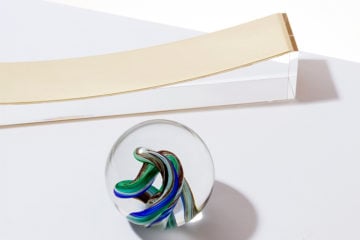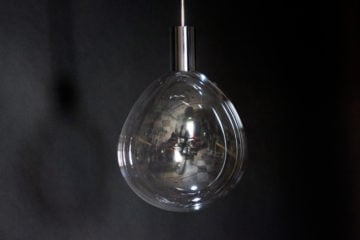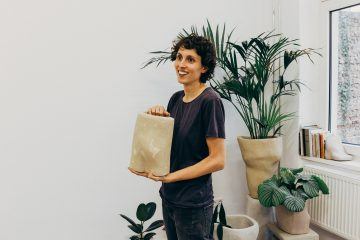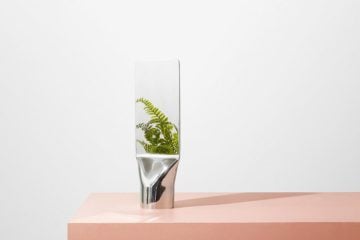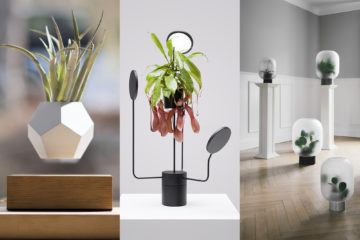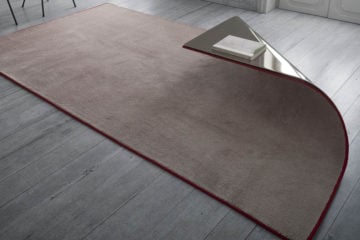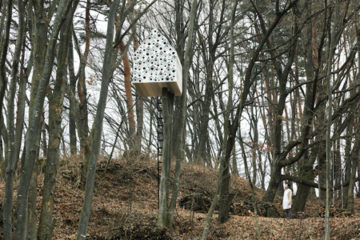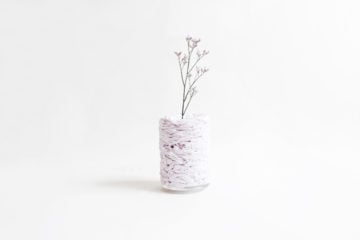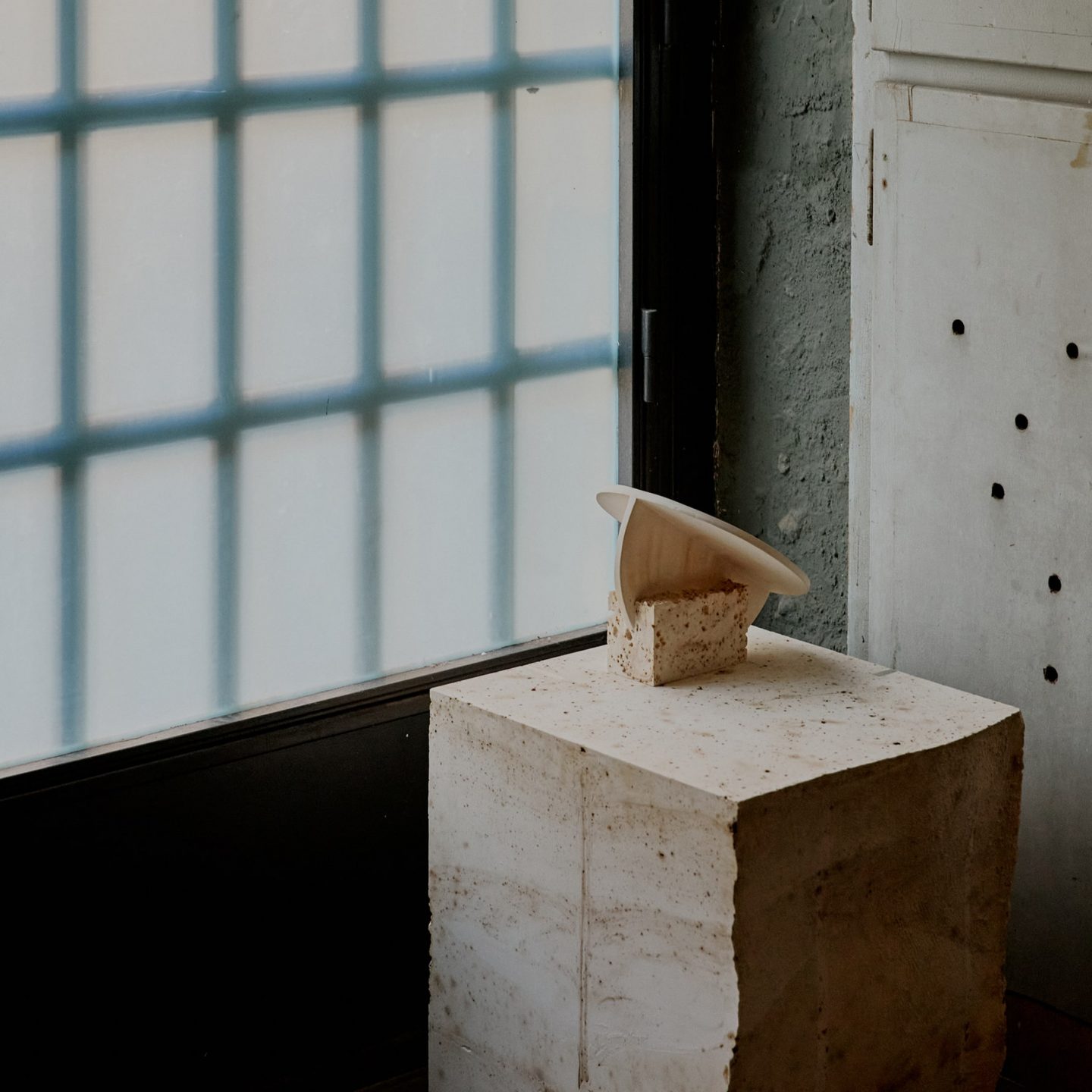
Harnessing The Emotive And Symbolic Power Of Materials: Turbina At Work
- Name
- Turbina
- Images
- Marina Denisova
- Words
- Devid Gualandris
For Spanish art and design studio Turbina, creating sculptural objects involves more than just hand-crafting, it comprises revealing the unseen potential of materials while enabling new experiences of the world that surrounds us. IGNANT traveled to the studio’s serene workspace in Barcelona, to chat with partners in life and work, Mateo Fumero and Minerva Castro-Capdevila, to document the inner workings of their unique practice.
Minerva and Mateo met in Barcelona over a decade ago. The duo lived for several years in a shared apartment in a self-managed artist warehouse in the city, Minerva having just arrived from Granada, where she had graduated at the Faculty of Fine Arts, and Mateo studying fine arts in the Catalan capital. “[There], we carried out activities and experimented with new artistic forms together. The two of us happened to share the same concerns about volumes and materials,” says the pair. This unique communal environment brought them to the realization that, together, they could create beautifully crafted sculptures. “Turbina is the result of those experiences; it happened naturally and gradually morphed into the all-rounder design studio that it is now,” they add.
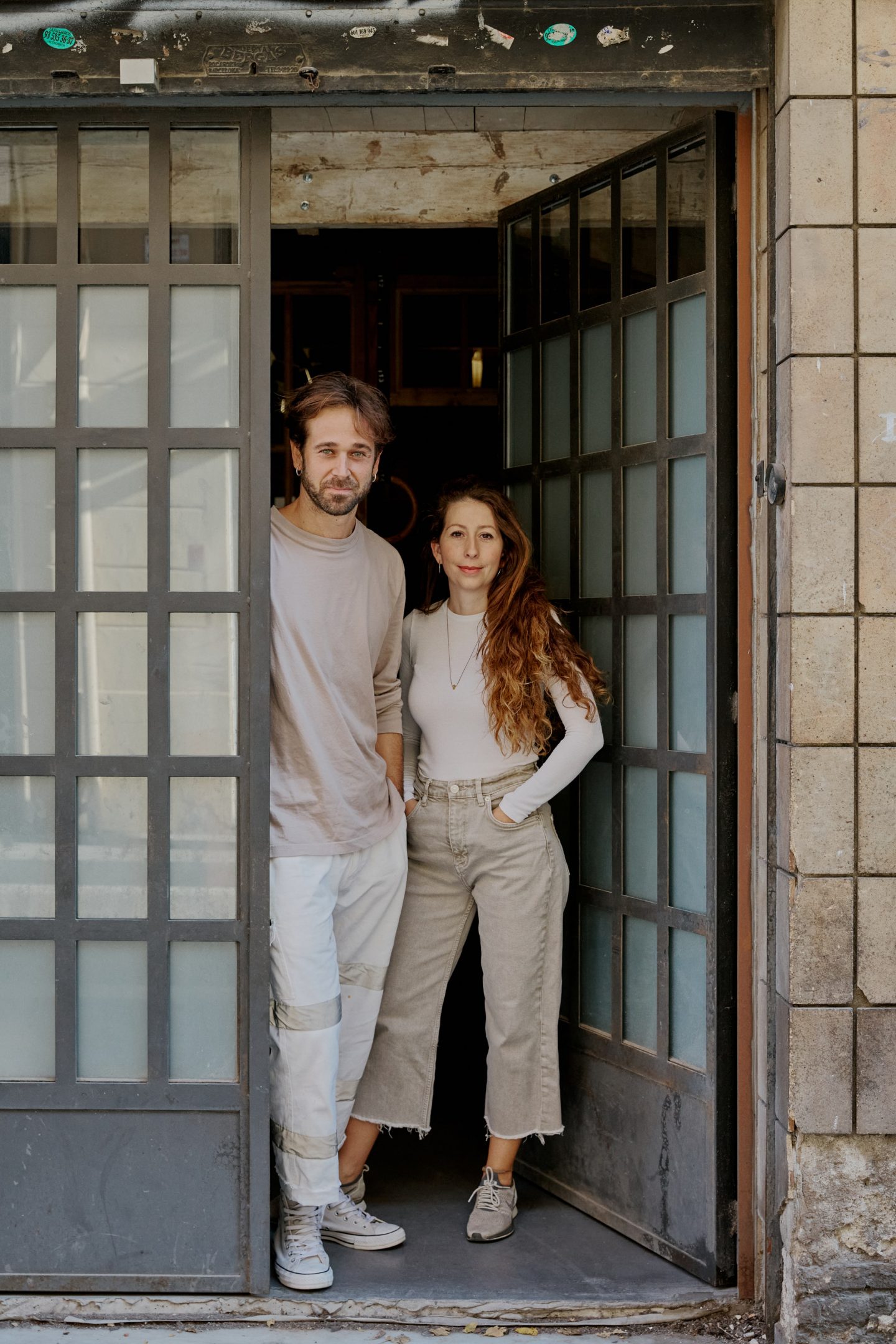
We are sitting with the studio’s founders inside their charming workspace in Barcelona. Located in the tranquil district of Sants, the studio is the result of a long renovation process. “The space was an old dry-cleaner in a state of complete abandonment,” they explain, and “we did most of the renovation work ourselves while living in it.” Filled with shelves and tools and softly lit by the sun streaming through the street-facing door, the space feels welcoming and updated while retaining its original charm. Elegantly displayed on walls and tables, works from their collections animate the space while simultaneously transforming it into an intimate, personal archive. “This is the center of Turbina’s galaxy,” they say—the place where Minerva and Mateo breathe new life into materials such as stone, clay, and brass, to create brutal sculptural objects and machines.
"Turbina is a way of living and understanding things"
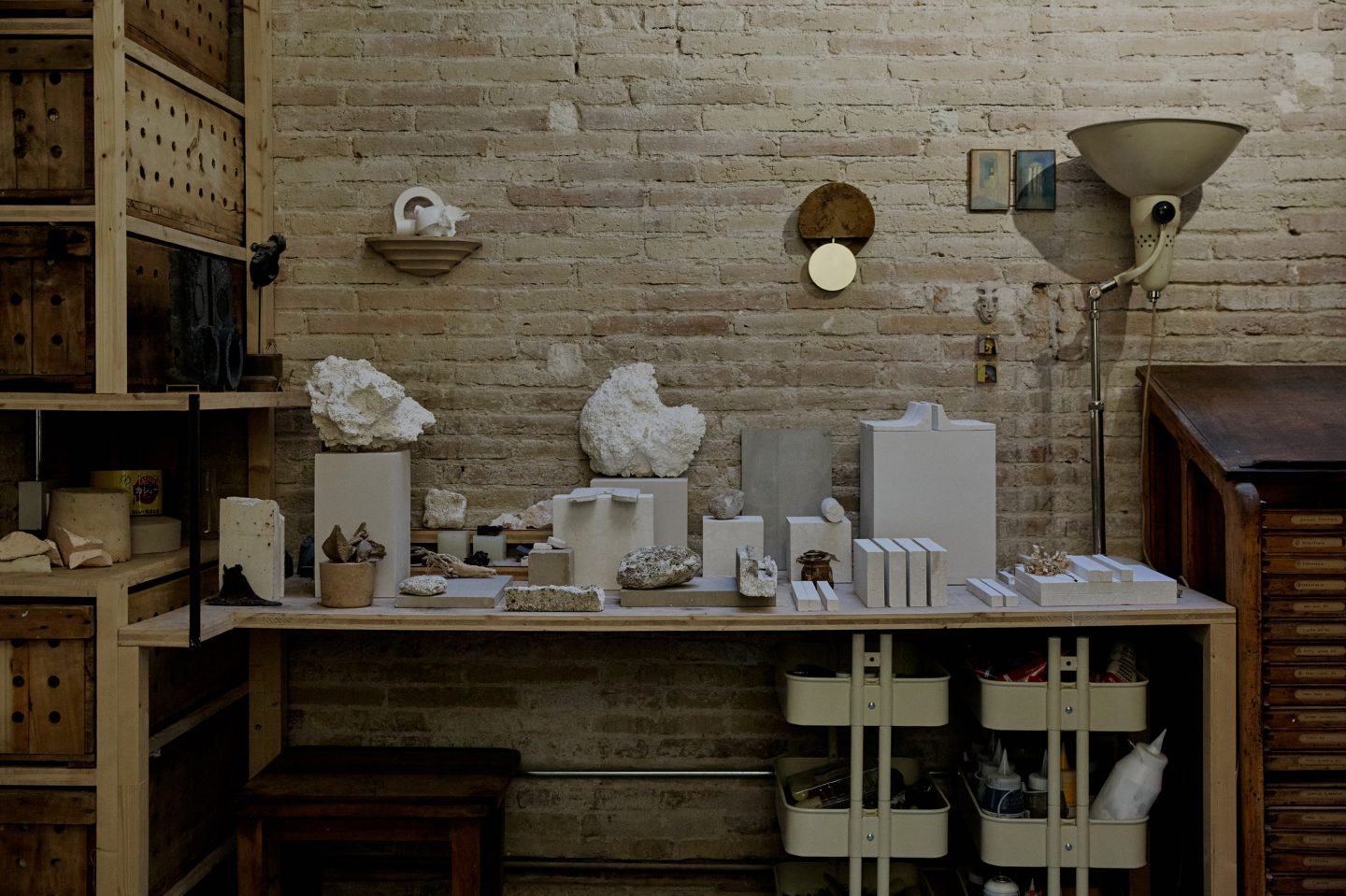
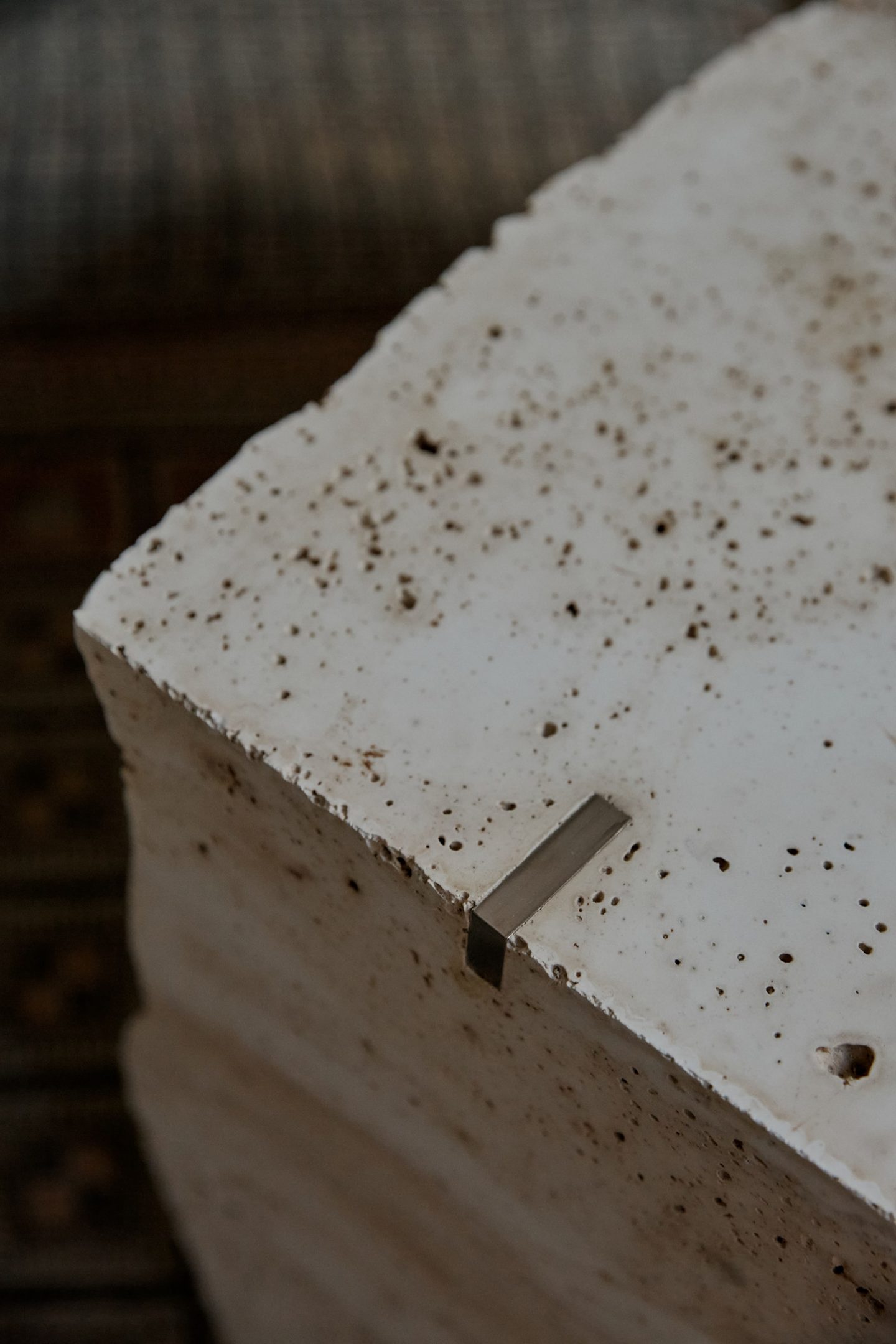
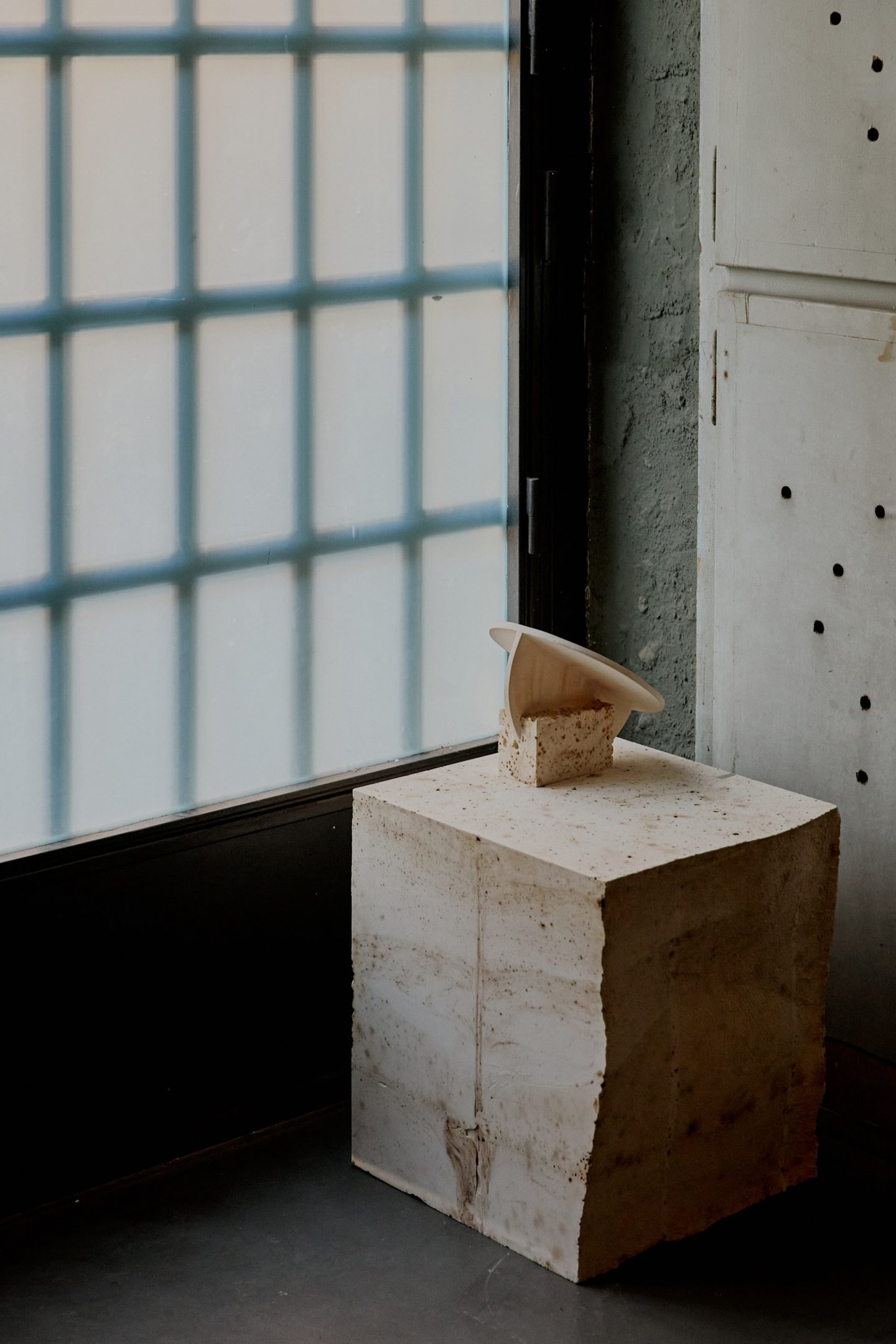
“When we started [Turbina], we didn’t know where the project would take us,” the duo explains during our walk-through. Turbina’s mission was never to become a product design studio. “Without discounting the complex technicality behind our work, we see our approach as primarily artistic. Turbina is a way of living and understanding things; it links our artistic world with our sentimental relationship,” they say. This approach has been integral to the choice of the studio, which combines workshop and housing into one. Here, art and life coexist, as work takes on new meaning. “Spaces can be adapted to the different phases and needs of the work; their layout and purpose are versatile,” they explain. “We use the terrace for the processes that require being outdoor, such as sanding and pressure washing; for photography and to assemble the pieces, we use the natural light of our living and cooking area.”
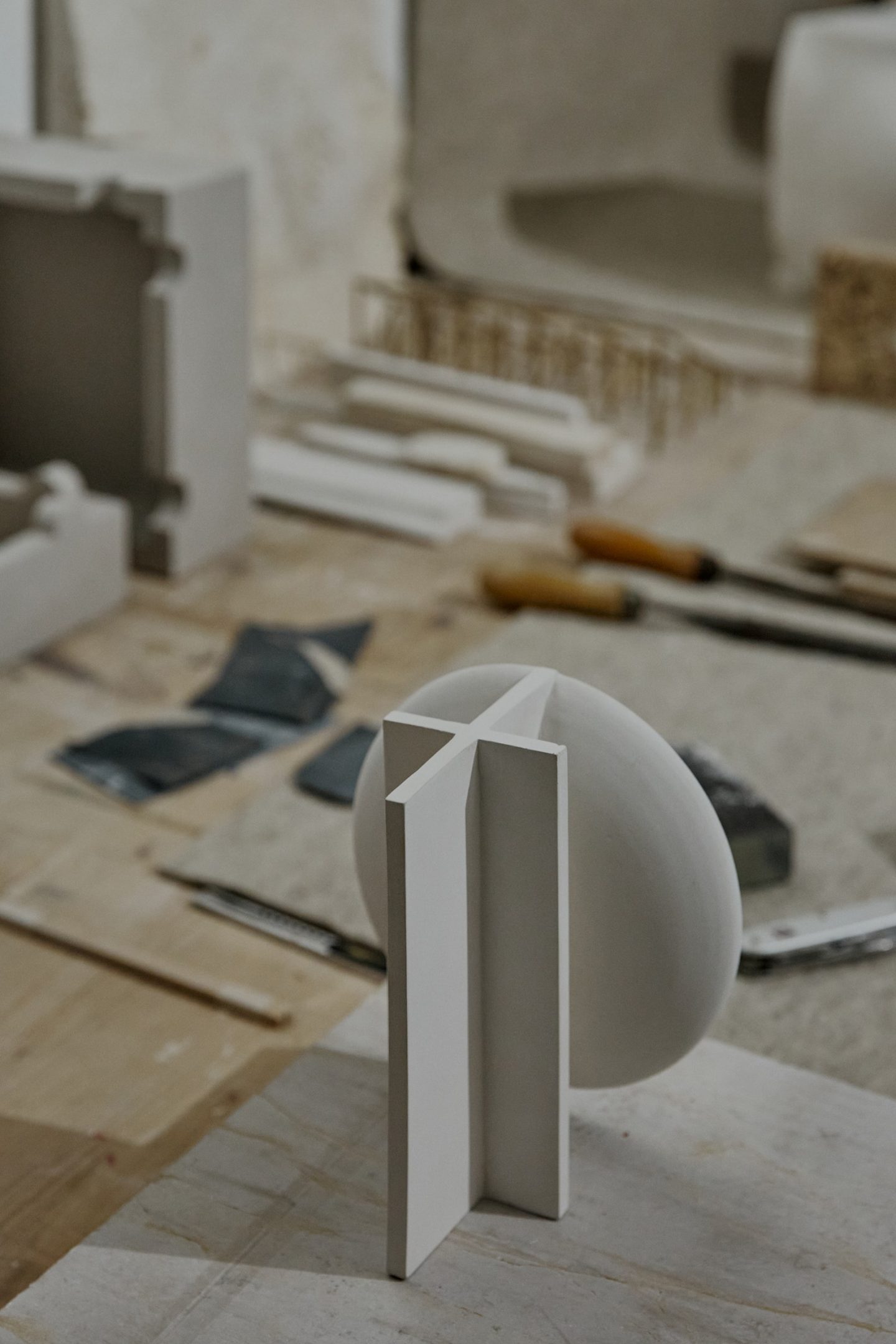
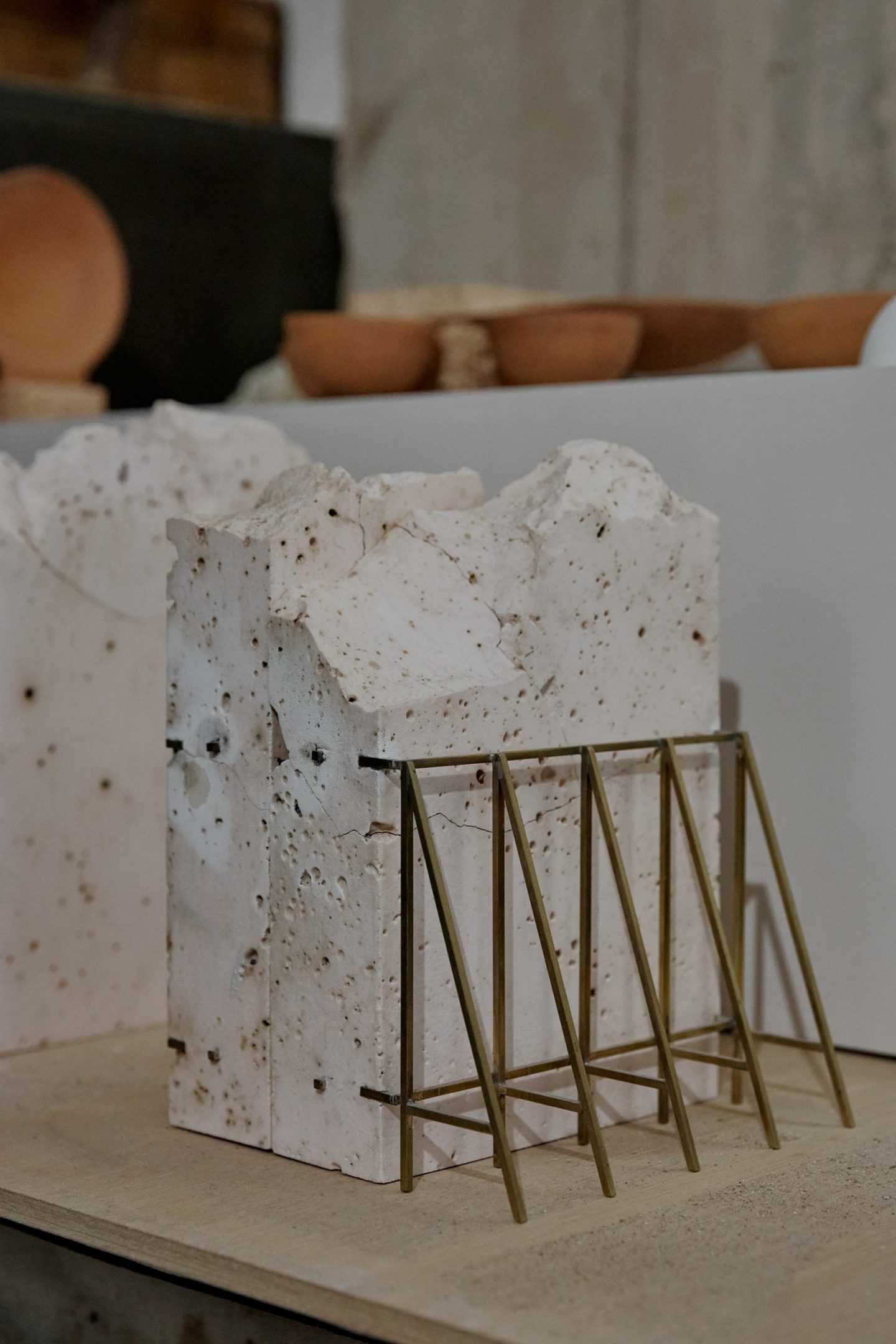
As we are guided through their crafting process—a captivating display of carving, molding, and shaping—one cannot help but admire how their conjoined forces are fundamental to the overall design cohesion. “We are both totally immersed in the whole process of each piece,” they say in-between moves; “it forces us to keep a clear communication on every aspect, even the most subtle ones.” With different skills complementing each other, the dynamic duo finds consistency in the sheer joy of creating together. “Turbina has led us to find synergies and possibilities as a duo. Creating together is an enriching experience; we always try to create favorable conditions to generate ideas, relating shapes and materials with sensations,” they explain. Suddenly, the name Turbina (Spanish for turbine) makes all the more sense—the idea of a constant flow, rotation, and movement; the very link between two energies.
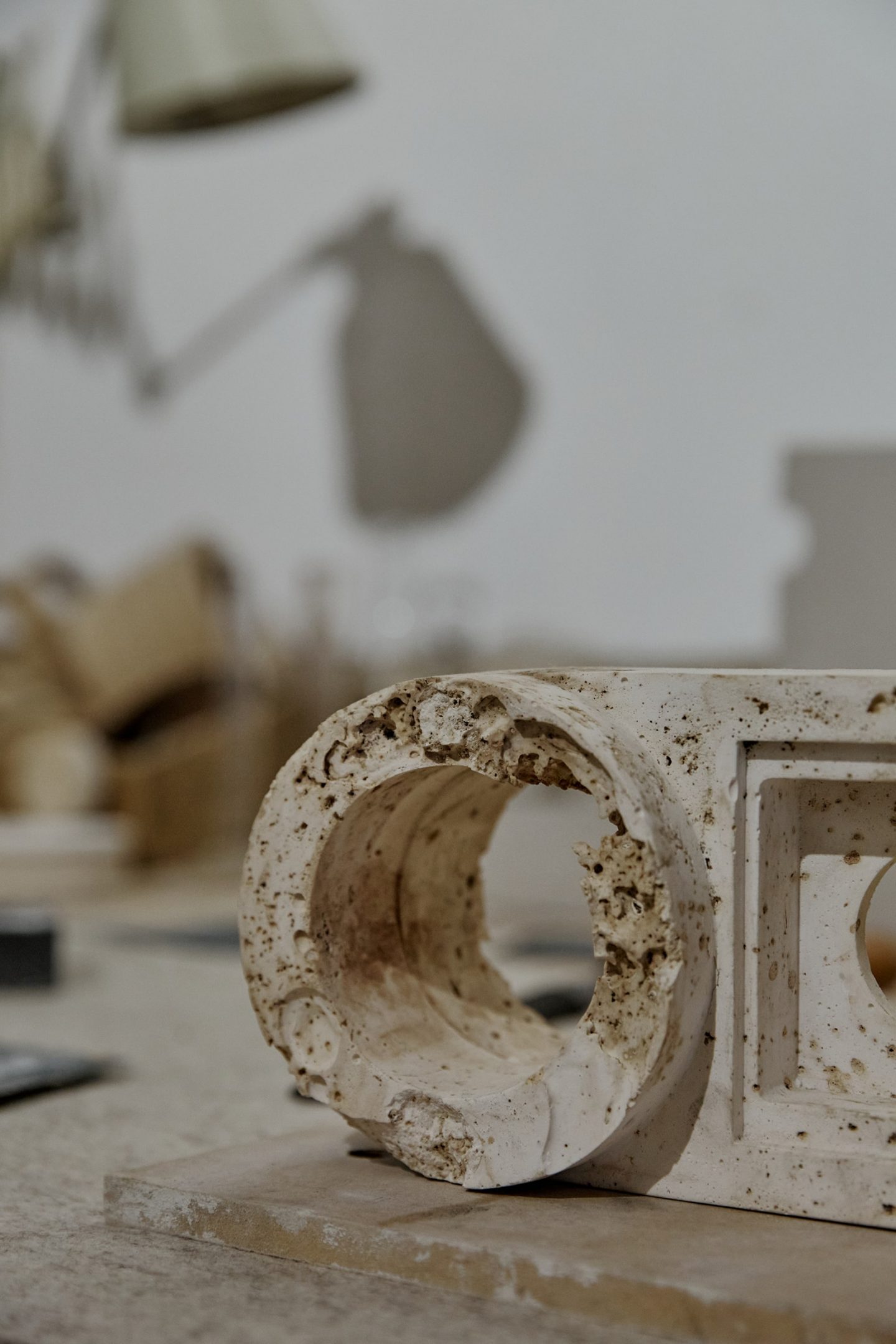
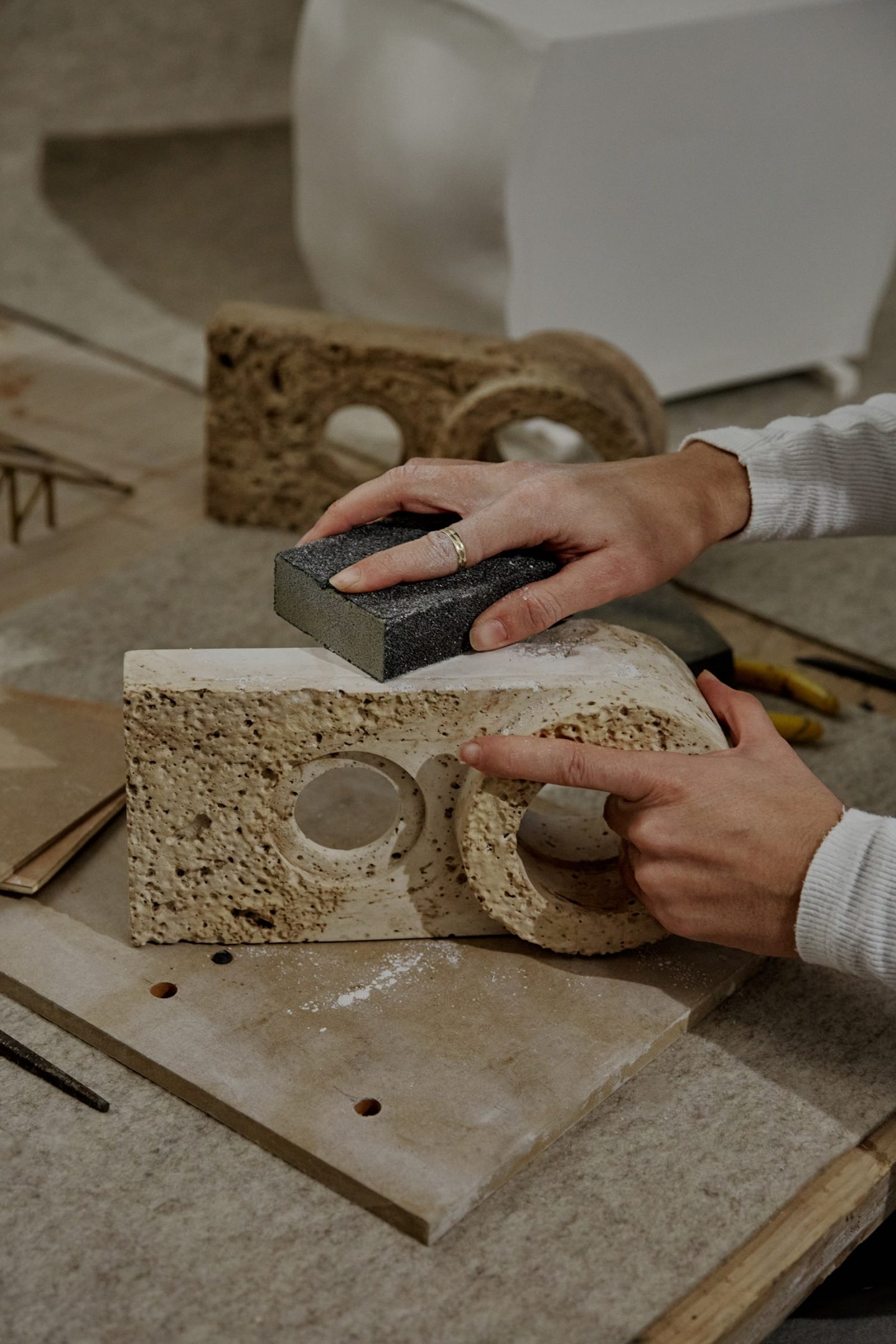
Beyond the artistic and personal value of their work, the core elements of Turbina are aesthetics and materiality. Striving to achieve something that is both an object and an artwork, their projects are the fruit of perpetual research, and the result of a slow and meticulous artisanal method, in which material is often the starting point. “With our work, we want to talk about the language of materials and contribute to the understanding that each material has its own implicit, ancient symbology, somehow inscribed in our collective unconscious,” they explain. “Stone, for example, has been fundamental in the material and spiritual development of humanity,” they add. “It has been charged with symbolic and social values that transcend its own materiality. Being the first ‘ally’ for humans in their confrontation with nature, it has left a deep imprint in our genetic and cultural memory.”
"With our work, we want to talk about the language of materials... [and their] own ancient symbology""
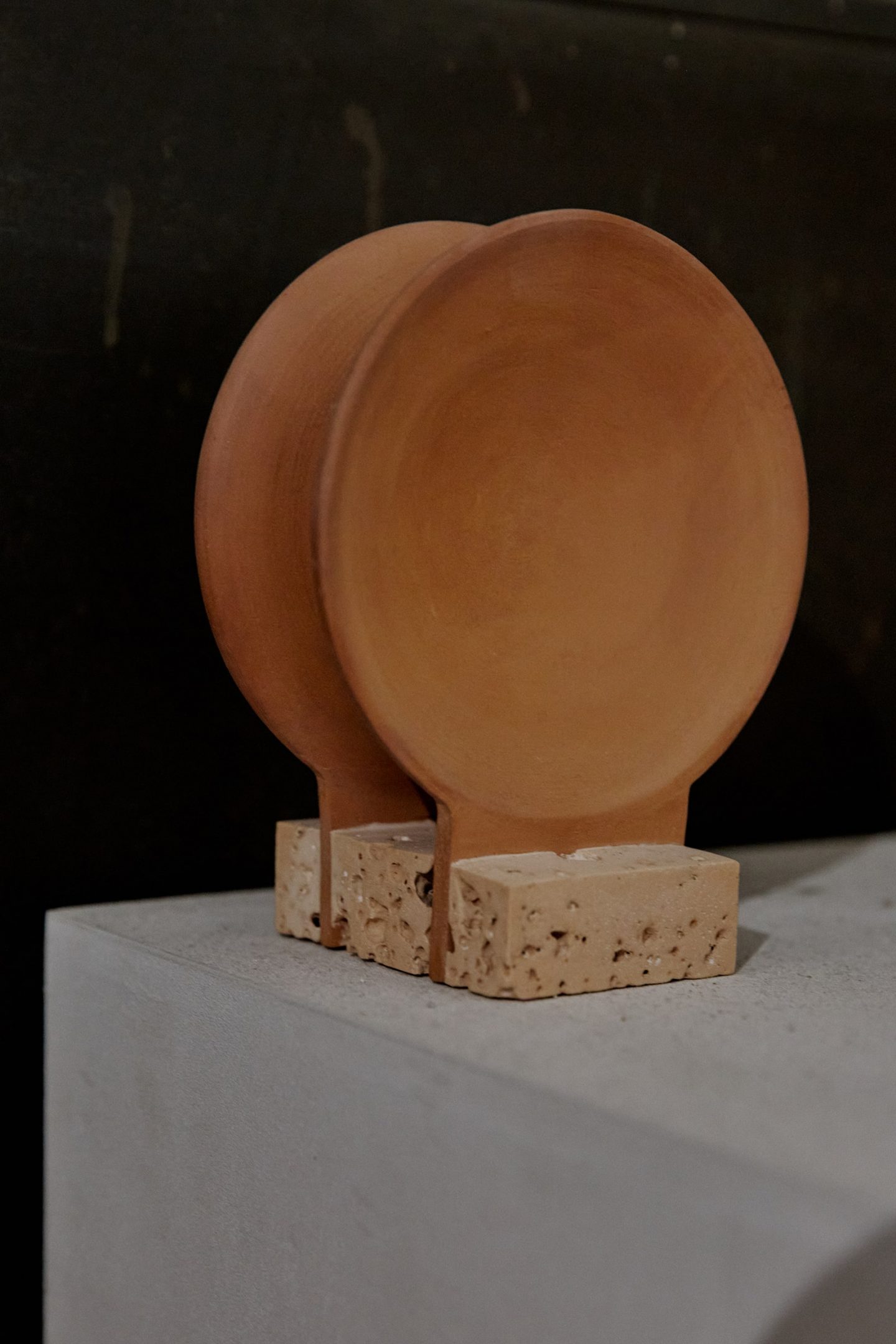
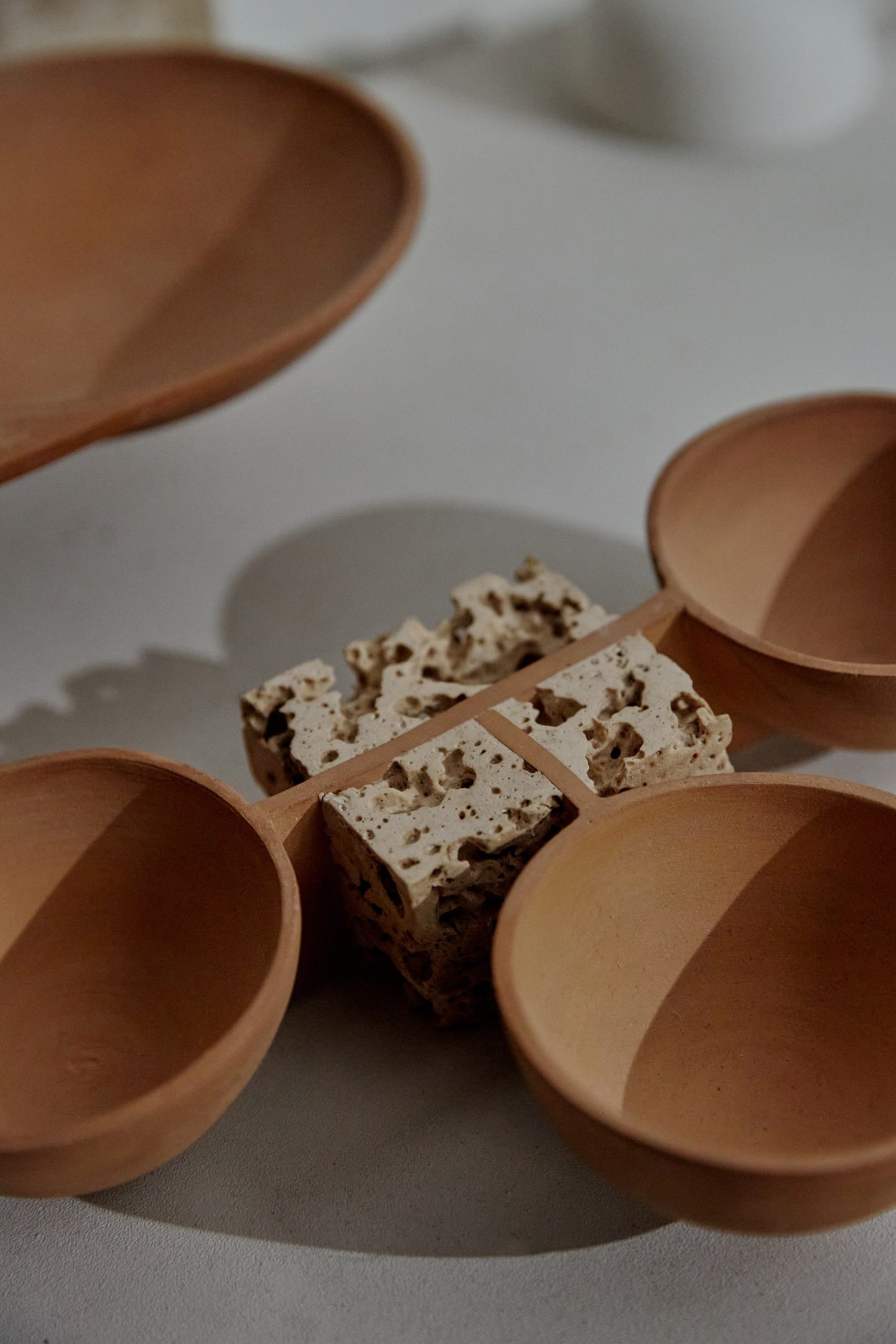
Since its inception, Turbina has wanted to expand the limits of sculpture by making temporal issues perceptible in their projects, and revolving much of their design around questions of rhythm and movement; either literal, in the employment of fans, motors, and clocks, or metaphorical, in the eroded appearance of the materials—sculpted as if marked by nature’s own phenomena. The studio recounts their first foray into sculpture-making with a special affection. “Our very first object was the Pendulum; one of the most intense and complex projects we tackled,” they say. Like a clock, the kinetic wall sculpture indicates the passing of time through a slow oscillation, without, however, telling the time. “It places us in an ever-lasting present, and represents the paradox that is the very concept of time: a past that is only a memory, a present that fades instantly, and a future that is only imagination,” they explain.
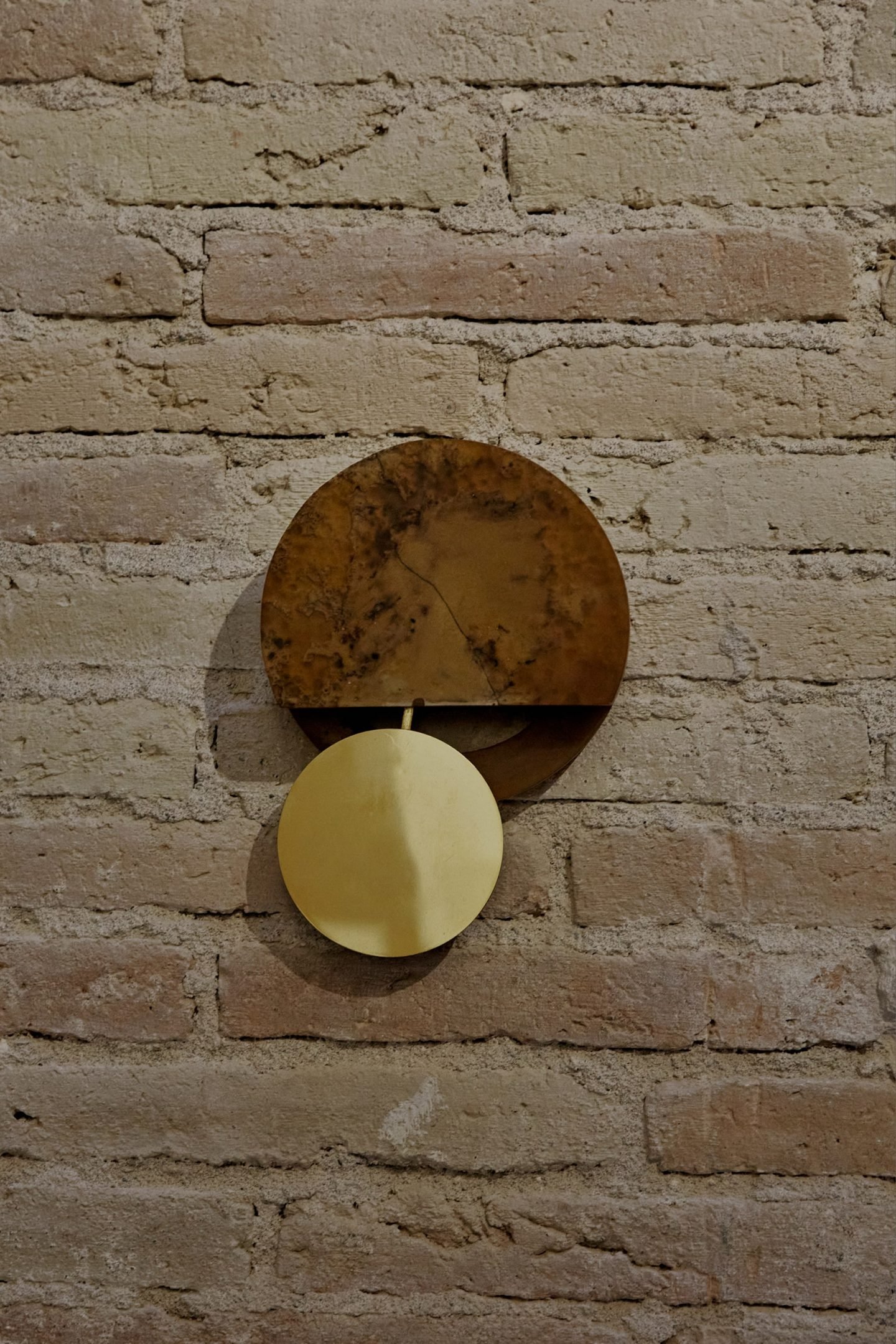
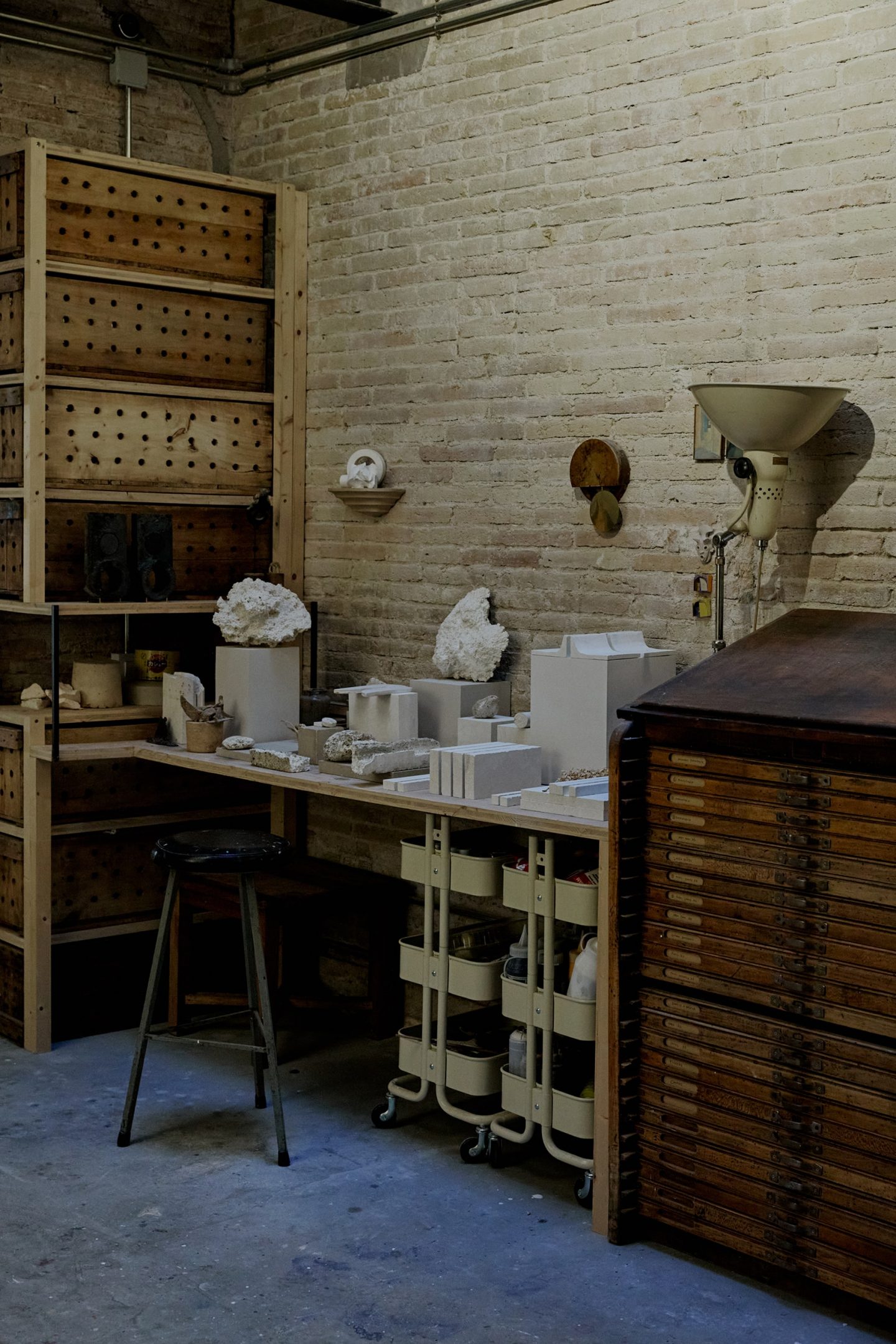
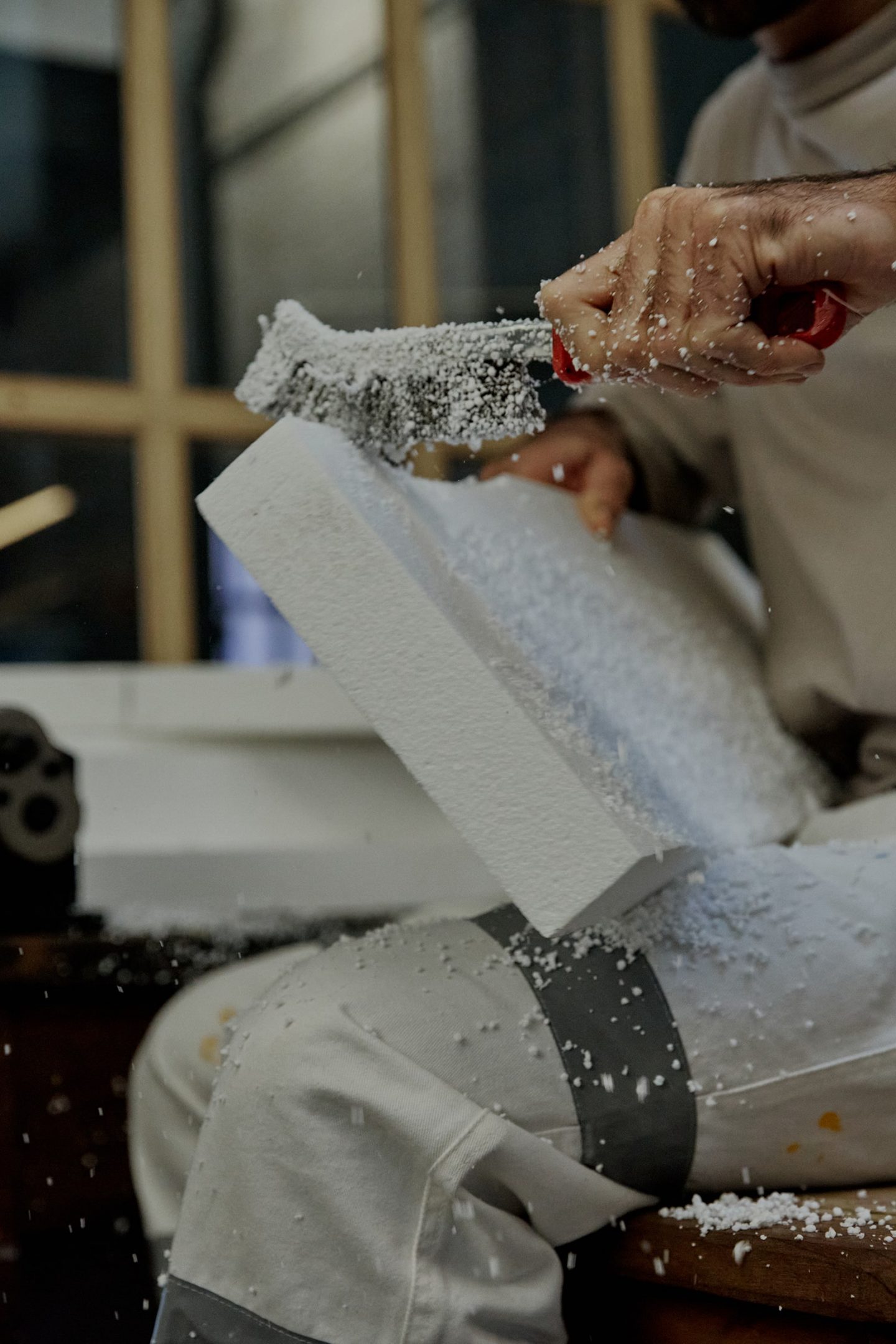
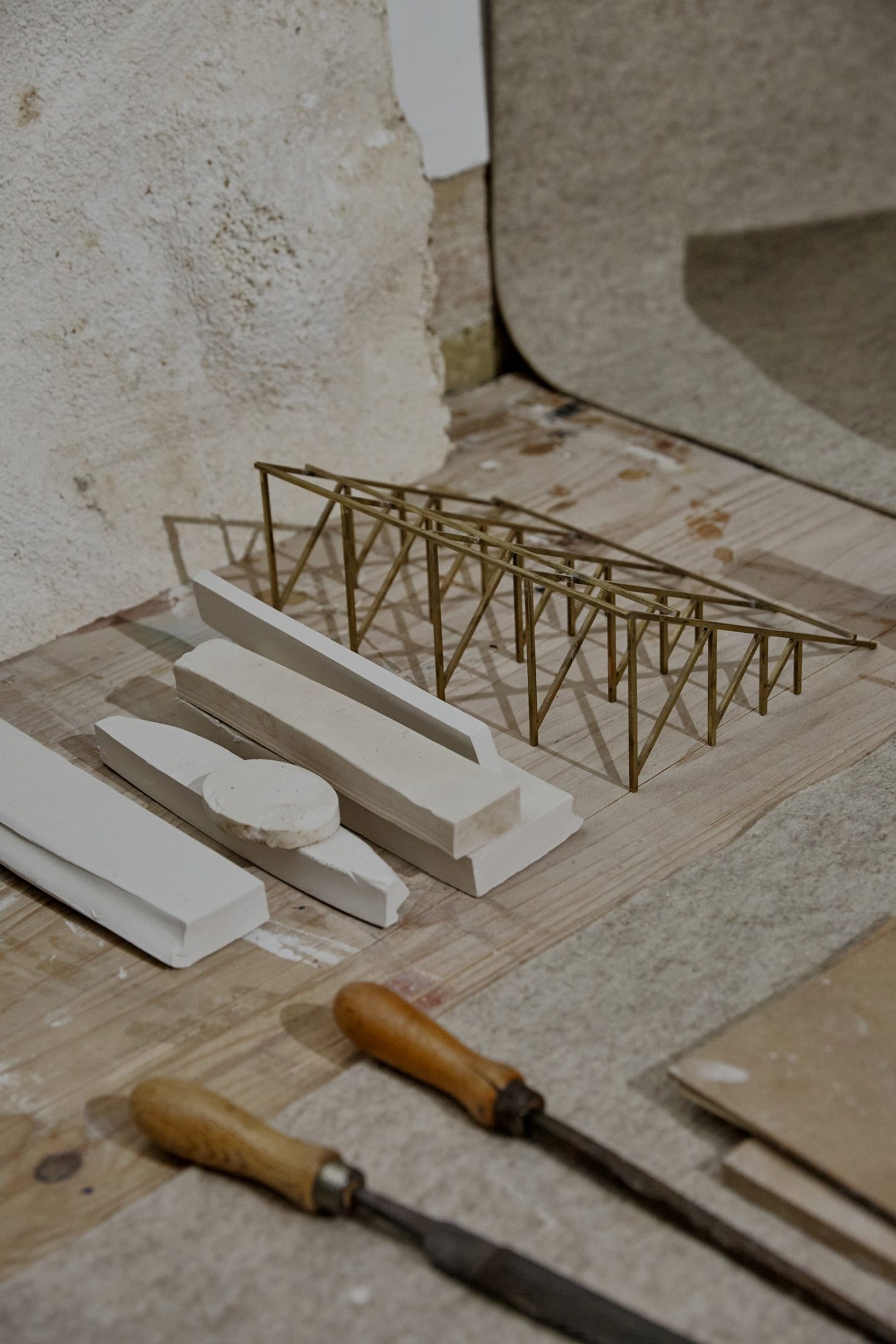
As we unravel the research and complex ideas that nurture their objects, the meaning behind each composition slowly comes to the fore. Informed by a fascination for the unknown, their sculptures are an inquiry into the functioning of the universe and the human connection to it. “Since the first humans looked at the sky, they projected in its infinity and mystery their own ideas and symbols. We are interested in the cosmos as an interrelated network of energies and matter; in rituals, primitive gestures, animalism, and witchcraft,” they confess. Their intrigue for earthy textures, mineral materials, and existential reflection is evident in all their collections. From their latest ‘Cosmos Awareness Program’—a set of unique pieces of fired clay and white limestone inspired by outer space—to their previous series’ ‘Future Archeology‘, ‘Jupiter’, and ‘Disc Clock’, their work is endlessly imaginative, evoking a sense of wonder and curiosity and satiating any appetite for the new or different.
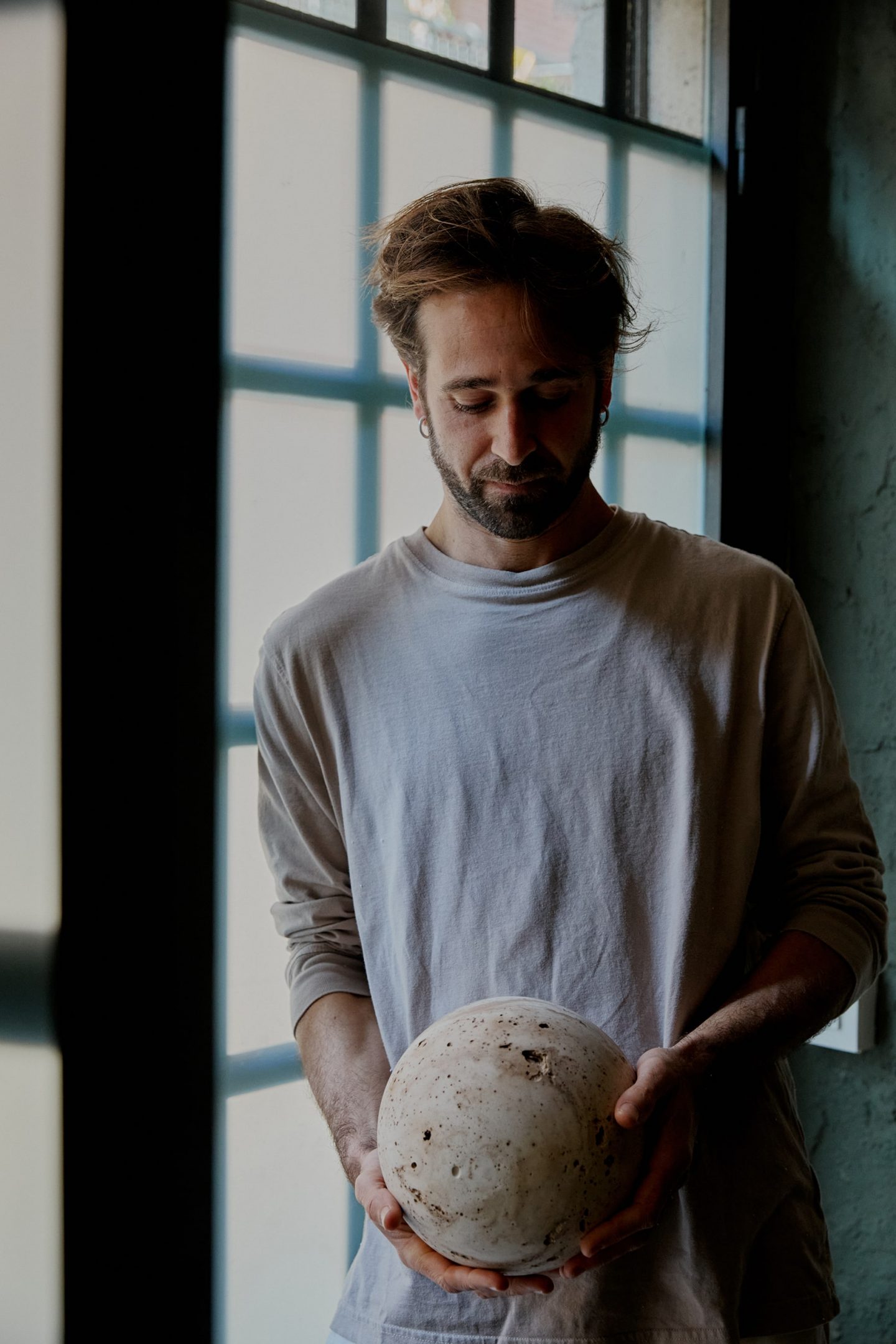
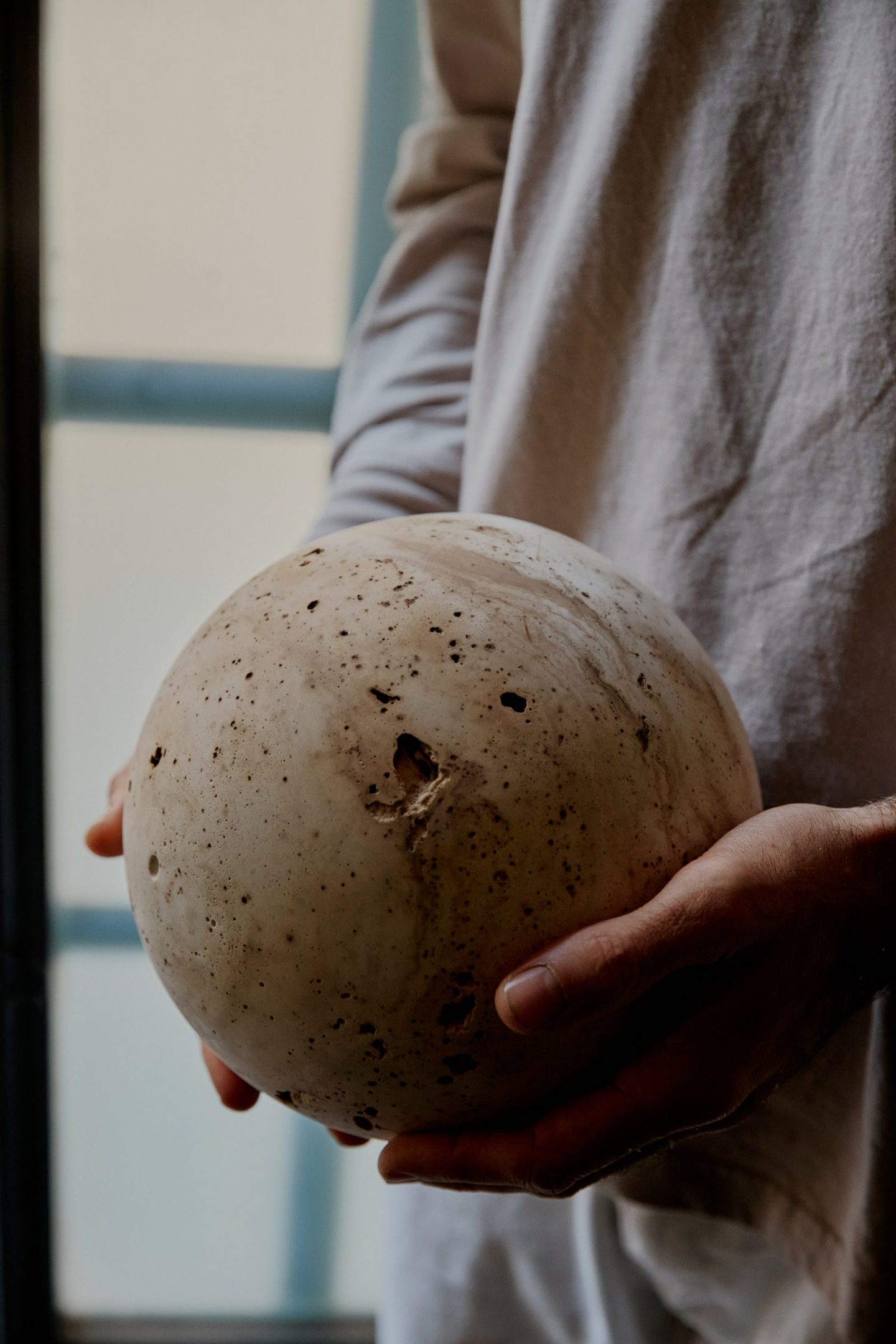
If there is one thing that is constant in the world of Turbina, it is leaving their comfort zone to explore new territory. The couple effortlessly experiment with shapes and designs, diving deep into new applications and characteristics of the material. “Experimentation is one of the most challenging parts, for it can lead to something great, or nowhere,” they admit; adding that, “it’s all about being open to surprises.” Their work highlights the poetic force of the accident. “In one of our tests with alpha gypsum, an unexpected organic reaction occurred in which the curing process is irregular and unpredictable. This is how our ‘Stone Cast’ was invented, a material born out of error, now used in many of our projects,” they explain. Deliberately left to chance and variation, their products gain not only more presence but also room for singularity; they eschew categorization, defining the very imperfect beauty that has become Turbina’s most celebrated quality.
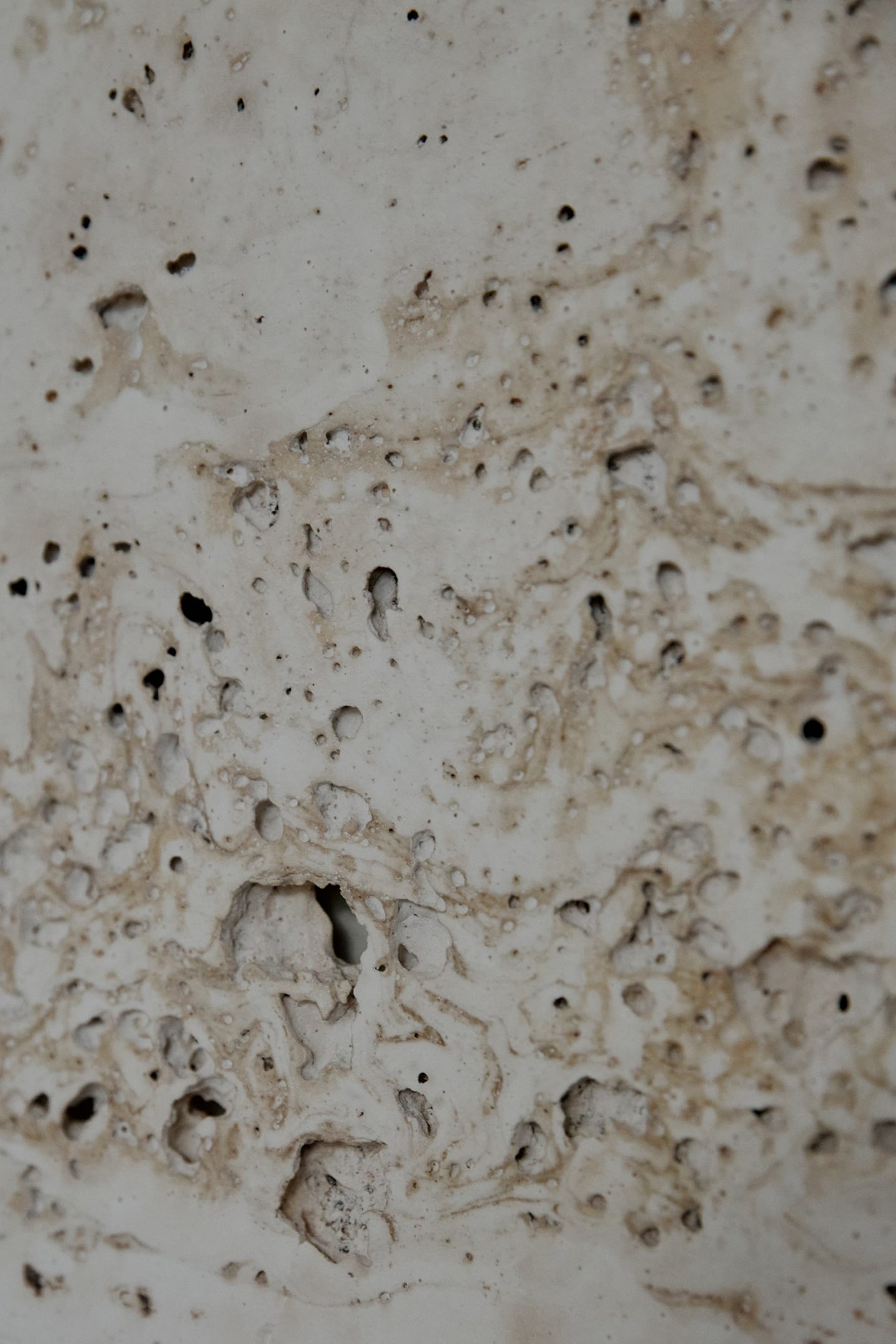
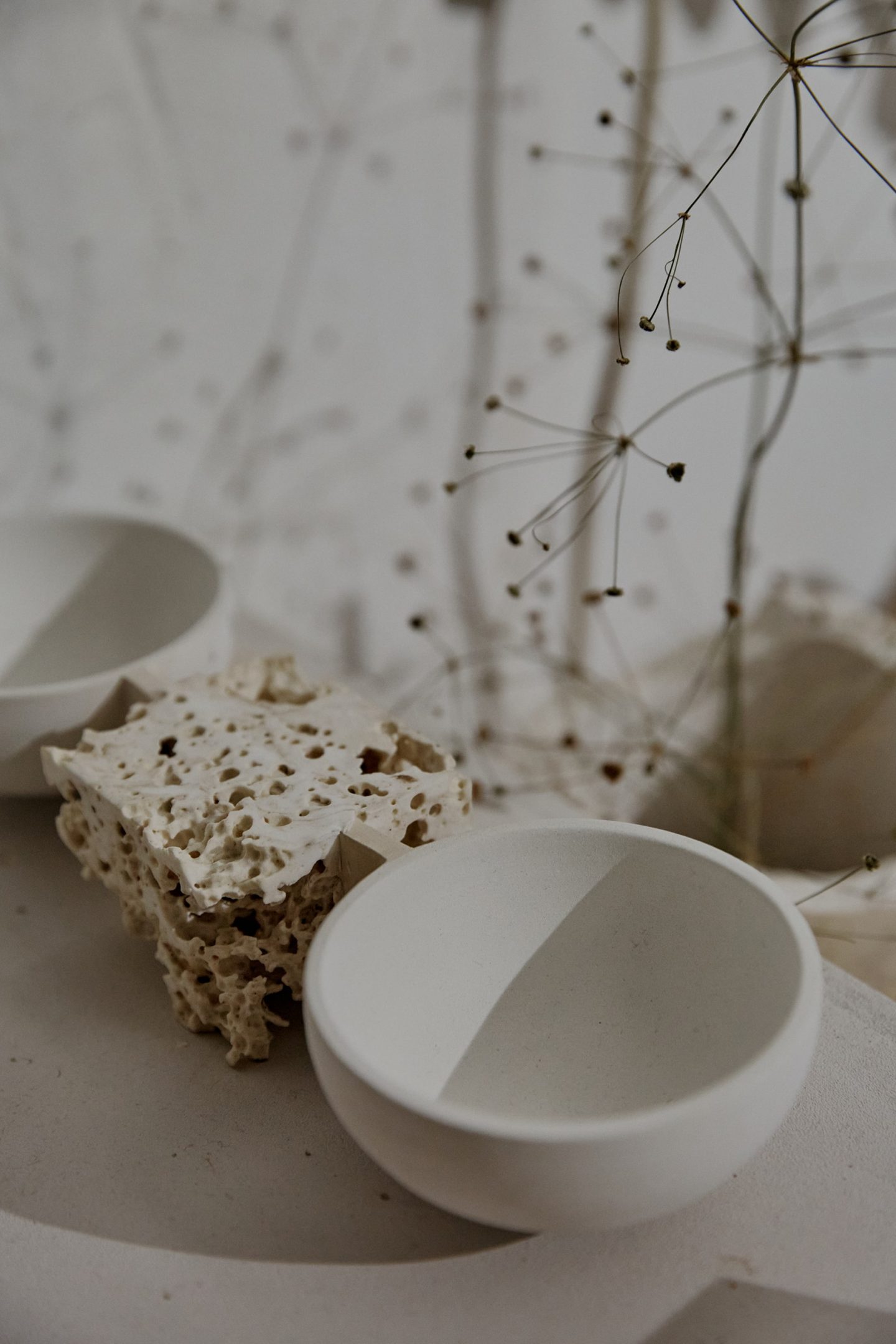
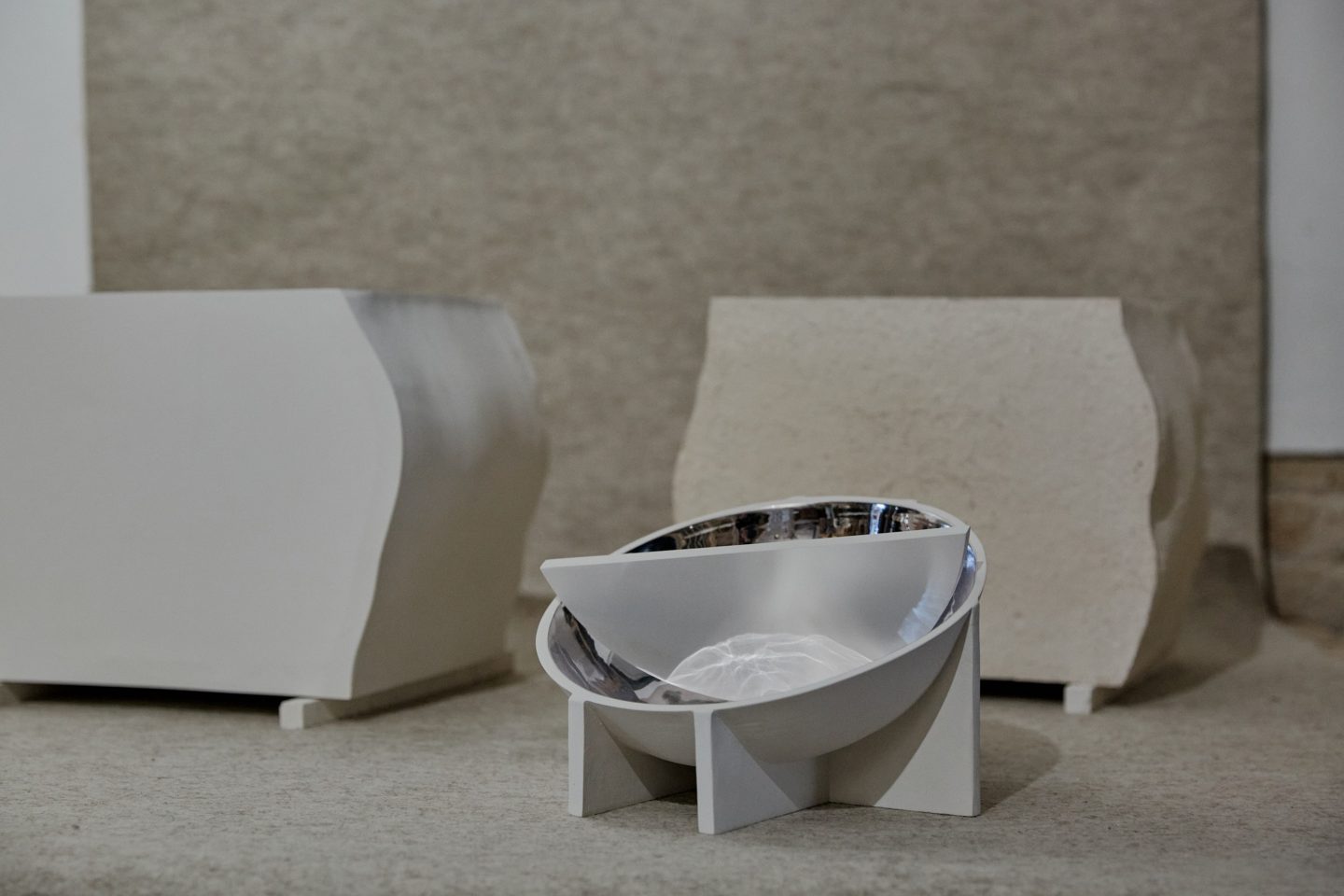
Sculpture-making is a lifelong exploration
Despite having their work showcased in national and international galleries, the pair describes their career as “still emerging”. At the root of their modesty is an incessant appetite for growth and a desire to explore new modes of sculpting and connecting with audiences. Because, for Mateo and Minerva, inspiration and work never end—the duo is always on the look-out for more creative occupations. “Outside of our studio, we find pleasure in turning the moments that capture our imagination into ideas for future use. We enjoy the contact with nature, the sea, sleeping, and cooking in the open air, but also geology and architecture,” they share. And, of course, Barcelona, the bustling city outside their glass door. “Its Mediterranean climate and light fascinate us daily; it is a beautiful place to live in. It is quite small, with many people passing through it, that we can welcome at our home,” they say with a soft smile. As we are pleasantly reminded of the connection to nature and sense of community that got Mateo and Minerva into design in the first place, we leave this space of peace and process behind with one important lesson: sculpture-making is a lifelong exploration.
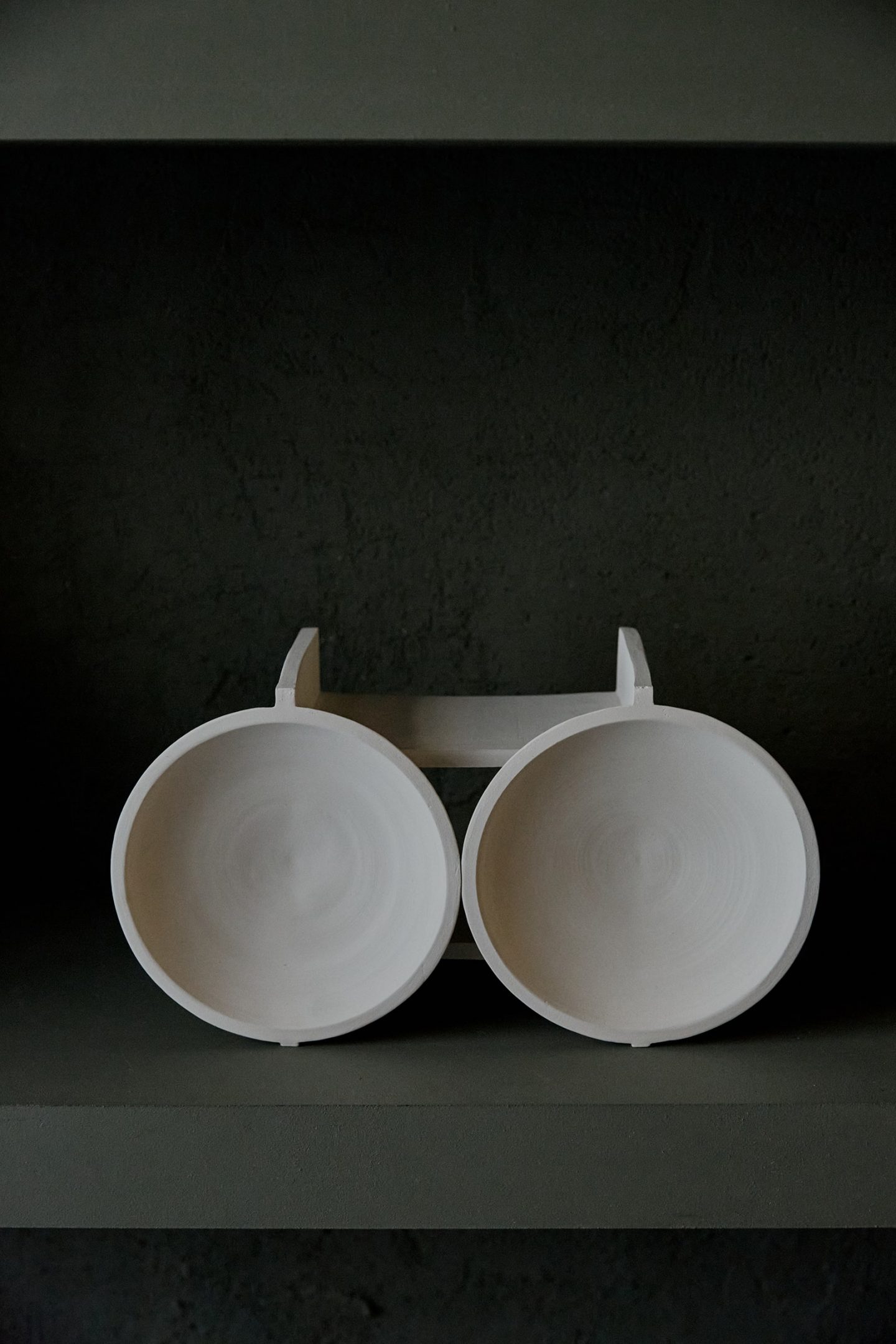
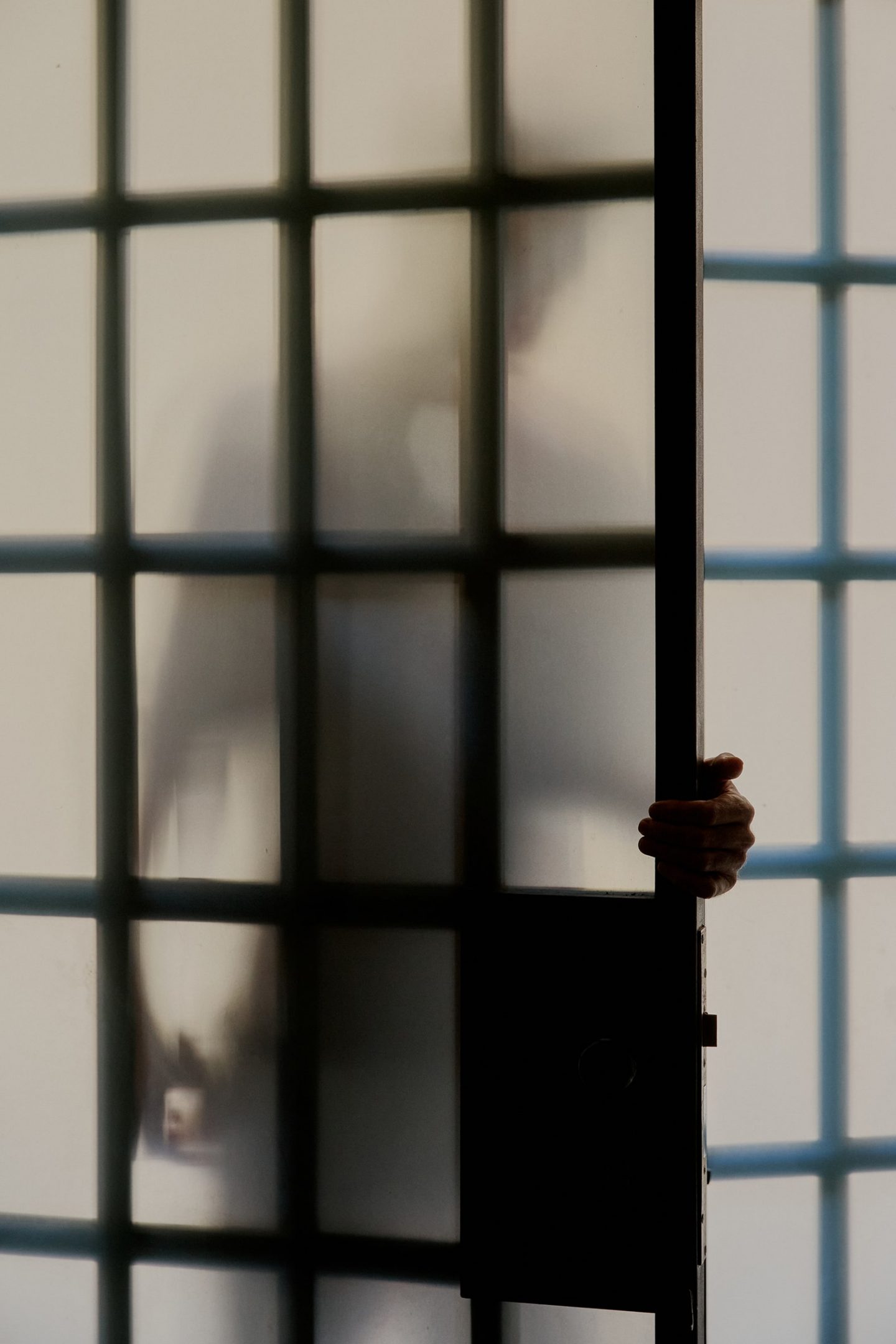
Images © Marina Denisova for IGNANT Production
